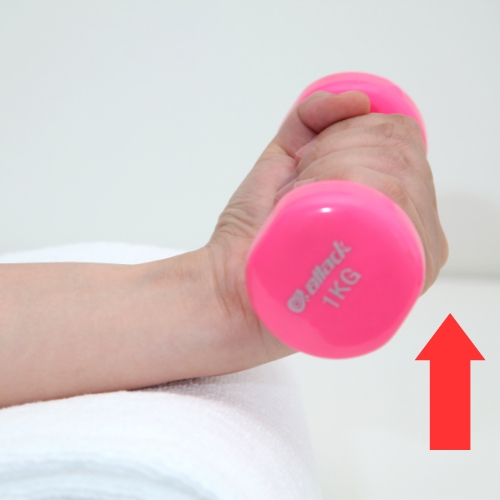De Quervain’s tenosynovitis is a painful condition affecting the tendons on the thumb side of the wrist. The condition generally manifests through repetitive stress on these tendons causing inflammation and swelling, which in turn leads to pain when raising the thumb or bending the wrist.

Common causes
Increased use of mobile gadgets makes people more prone to suffer from pain in the thumb and wrist and the condition is often seen in housewives, computer users, and racket sports players. Most common causes are:
- Frequent and repeated movement of the thumb and wrist, for example, using mobile gadgets or computers to type messages
- Not keeping the wrist in a neutral (straight) position when moving or using the thumb
- Overuse of the forearm and thumb muscles, for example, repetitively squeezing a racket or golf club hard
Pregnant ladies are also at a higher risk of suffering from de Quervain’s tenosynovitis due to hormonal changes, which cause tendons and ligaments to become laxer. For them, the recovery period is also longer as they may need to wait till the hormone levels return to normal after pregnancy.

Signs and symptoms
- Pain in the wrist or thumb
- Trouble gripping objects
- Swelling in the wrist
- Stretchy feeling and tightness over the forearm muscles
- Cracking sound when moving the thumb
Physiotherapy Treatment
Usually, de Quervain’s tenosynovitis can be managed well with physiotherapy treatments. The expected recovery duration is about six to eight weeks for soft tissues healing and treatment varies according to the phase of the injury.
Acute phase
Pain relief is the main goal. Pain, swelling, and redness at the hand are the common symptoms in the inflammation stage. Physiotherapy treatments aim to reduce the inflammation and improve the circulation around the tendons, for example, ice therapy, acupuncture, ultrasound and microcurrent therapy (a form of electrical stimulation). It is also important to let the hand region rest. People suffering from acute pain should also avoid carrying weight and any squeezing motions.
|
A wrist and thumb brace or support for stabilization can keep the thumb and wrist in a proper position at all times.  |
Sub-acute phase
As the pain is being managed, stretching and gentle mobilization can be helpful. Gentle massage on the tendons and muscles and stretching can begin, to maintain the range of movement of the thumb and the flexibility of the soft tissues. The following exercises in the sub-acute phase.
|
A) Active exercise for the thumb   Move the thumb in and out horizontally and repeat 10 times   B) Stretching the thumb tendons   Bend the thumb and hold with other fingers. Bend the wrist gently for stretching. Hold for 10-15 seconds. Repeat 3 times.3 Recovery phase |
When the pain level becomes stable, strengthening exercises for the thumb and wrist muscles can begin, to build more support.
|
A) Squeezing exercises with a soft ball  B) Thumb extension resistance exercise  C) Strengthening of forearm muscles with a dumbbell   Hold a light weight (2-3 lbs) with the palm down and move the wrist up   |
Drug management
If the pain cannot be controlled fully with physiotherapy treatments, medication or injection may give fast relief to control the pain and inflammation.
Non–steroidal anti-inflammatory drugs (NSAID) or other painkillers can be used to control the early stage of inflammation. If the pain and inflammation are not controlled well with oral drugs, the doctor may suggest a local steroid injection to the inflamed tendons.
Surgical intervention
If the pain does not respond well to physiotherapy, medication and injection, the doctor may recommend a “tendolysis” surgical intervention to release the tendon from adhesions and let the tendons glide smoothly.
Preventive measures
Preventive care and measures care and measures
- Avoid prolonged repetitive stress on the thumb and wrist, for example, squeezing a towel, using a computer mouse or gripping objects tightly between the thumb and fingers
- Keep the wrist in a neutral position. Rest and perform stretching exercises between work
- Carers of babies should support the baby with the whole palm instead of only using the crook of the hand


Call us now at 2537 7407 to arrange an appointment with our medical professionals, or simply click the below link to book online
Articles on this website are informative only and not intended to be a substitute for professional medical advice, diagnosis or treatment. They should not be relied upon for specific medical advice.

Information provided by:
Physiotherapy Department, Matilda International Hospital










